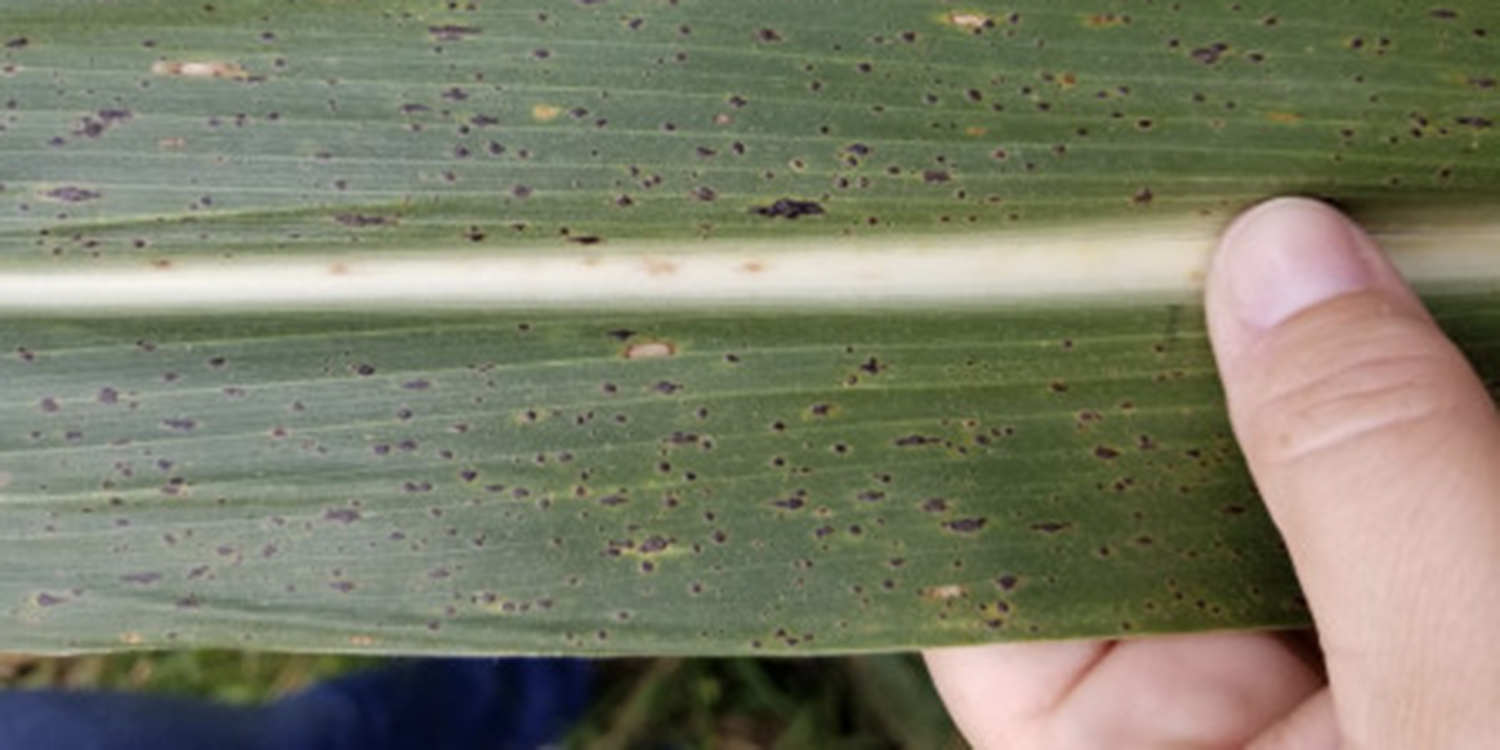About 10 years ago, Goss’s Wilt crept into our region and spread quickly due to ideal conditions. Not much was known about the disease initially, but some expedited information quickly taught growers how to mitigate the disease’s damage.
Some of us are getting flashbacks to this time now that Tar Spot is becoming more prevalent in this decade. This fungus only entered the United States in 2015, reaching eastern Iowa in 2016. With it being fairly new to agronomists, we are still trying to figure out the best ways to prevent and fight against its effects.
Tar Spot overwinters in corn residue and spores are dispersed mostly by rain and high humidity. The plant is susceptible to infection at any development stage, and when conditions are right multiple spore releases can occur during the growing season. A challenge with this disease is that spores will infect and live in the plant for up to 20 days before the symptomatic brown lesions appear.
In heavily-infected areas such as Indiana, we’ve seen fields with losses up to 50-60 bushels per acre due to this fungus. According to Crop Protection Network, yield losses are due to reduced ear weight, poor kernel fill, and vivipary (a condition in which the seed germinates while still on the cob). Stalk rot and lodging may increase when the severity of the disease is high.
I personally walked fields around Fonda with the presence of Tar Spot showing up on leaves. While the severity isn’t as dire as the heavily impacted Indiana fields, we do want growers to be aware of some best practices when it comes to mitigating the impact this fungus can have on your yields.
First and foremost, crop rotation can help reduce the severity of Tar Spot. Secondly, see if your seed company is doing any hybrid resiliency testing for it. Many companies are looking into susceptibility versus tolerance when it comes to this disease. Third, utilize a long-lasting fungicide next season for the best chance to mitigate issues.
In eastern states such as Indiana, growers are defending their heavily-infested fields with two shots of fungicide to ward off the negative effects of Tar Spot. Personally, I don’t think our side of the state is in that camp yet. We are recommending one shot of a premium, long-lasting fungicide such as Veltyma, Delaro Complete, or Miravis Neo prior to seeing a problem. A decade ago, most recommendations were for fungicide to be applied on brown silks. Today, that timing is too late with some of these newer diseases. The V10 growth stage is more along the lines of when we’d suggest applying.
Lastly, if you don’t already, try to scout in the fall each year for pressure from these newer diseases such as Tar Spot. This will help dictate the coming year’s application plan.
Worried about Tar Spot after seeing issues this year? Let’s talk. Our Sales Agronomists can point you in the right direction.




